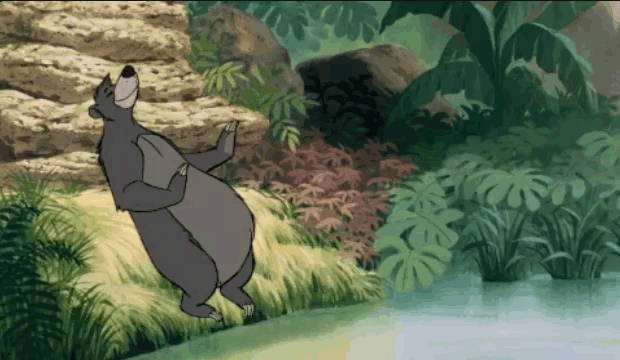Class 10 | Science
Audio Lecture
Topic Tree
The NCERT (National Council of Educational Research and Training) textbooks for Class 10 Science cover a variety of topics. If you’re asking about the topic related to the environment, it would be broadly based on environmental science, conservation, and related concerns.
Here’s a summarized breakdown of the potential topic “Our Environment” with key points, assuming you’re referring to the general structure and content areas covered by NCERT:
- Introduction to the Environment
- Definition and importance of the environment.
- Interaction between biotic (living) and abiotic (non-living) components.
- Ecosystems
- Definition and components of an ecosystem.
- Producers, consumers, and decomposers.
- Energy flow in ecosystems: Food chain, food web, and trophic levels.
- Environmental Problems
- Pollution: Types (air, water, soil, noise) and their effects.
- Deforestation and its impact.
- Loss of biodiversity.
- Management of Natural Resources
- Conservation of forests and wildlife.
- Sustainable use of water.
- Reusing and recycling materials.
- Waste Production and its Management
- Biodegradable and non-biodegradable waste.
- Methods to manage waste: Composting, recycling, and landfill.
- Ozone Layer Depletion
- Causes and effects.
- Measures to prevent depletion.
- Global Warming and Climate Change
- Greenhouse effect.
- Impact on biodiversity and human life.
- Mitigation and adaptation strategies.

Terms and definitions
| Ecosystem | A community of living organisms and their physical environment. |
| Biodiversity | The variety of life on Earth, including species, genes, and ecosystems. |
| Trophic Level | Each step in a food chain or food web. |
| Decomposers | Organisms that break down dead or decaying organisms. |
| Herbivores | Animals that eat plants. |
| Carnivores | Animals that eat other animals. |
| Producers | Organisms that produce their own food, typically through photosynthesis. |
| Consumers | Organisms that rely on other organisms for their energy and food. |
| Food Chain | A series of organisms each dependent on the next as a source of food. |
| Food Web | A system of interlocking and interdependent food chains. |
| Ozone Layer | A layer in the Earth’s stratosphere that absorbs most of the sun’s ultraviolet radiation. |
| Biodegradable | Capable of being decomposed by bacteria or other living organisms. |
| Non-Biodegradable | Materials that cannot be broken down by natural processes. |
| Pollution | The presence or introduction of contaminants into the environment. |
| Habitat | The natural environment in which an organism lives. |
| Deforestation | The action of clearing a wide area of trees. |
| Conservation | The action of conserving something, especially the environment. |
| Renewable | A source of energy that is not depleted when used. |
| Sustainable | Capable of being maintained over the long term without harming the environment. |
| Global Warming | The long-term rise in the average temperature of the Earth’s climate system. |
Key Points
1. Introduction to the Environment
- Environment: Surroundings where organisms live, interact.
- Comprises both biotic (living) and abiotic (non-living) elements.
- Essential for the survival of organisms.
2. Ecosystems
- Ecosystem: A unit consisting of living organisms & their environment.
- Components:
- Producers: Organisms that prepare their own food (e.g., plants).
- Consumers: Organisms that consume other organisms (e.g., humans, animals).
- Decomposers: Organisms that break down dead organic matter (e.g., bacteria, fungi).
- Energy Flow:
- Food Chain: Linear sequence of organisms eating & being eaten.
- Food Web: Interconnected food chains.
- Trophic Levels: Different stages in a food chain.
3. Environmental Problems
- Pollution: Harmful substances in the environment.
- Types: Air, Water, Soil, Noise.
- Deforestation: Clearing forests, leading to habitat loss, climate change.
- Biodiversity Loss: Reduction in variety of plant & animal species.
4. Management of Natural Resources
- Conservation: Protecting & preserving natural resources.
- Examples: Wildlife sanctuaries, afforestation.
- Sustainable Use: Using resources in a way that preserves them for future generations.
- Example: Rainwater harvesting.
- Reuse & Recycling: Using items multiple times & converting waste into usable products.
5. Waste Production and its Management
- Biodegradable: Waste that can be broken down naturally (e.g., food scraps).
- Non-biodegradable: Waste that doesn’t decompose easily (e.g., plastics).
- Management Techniques:
- Composting: Converting organic waste into compost.
- Recycling: Processing waste to produce new materials.
- Landfill: Burying waste in land pits.
6. Ozone Layer Depletion
- Ozone layer: Protects Earth from harmful UV rays.
- Causes of Depletion: Chlorofluorocarbons (CFCs), halon gases.
- Effects: Increased UV, leading to skin cancers, cataracts.
- Prevention: Montreal Protocol – global agreement to reduce CFC production.
7. Global Warming and Climate Change
- Greenhouse Effect: Natural process; certain gases trap heat, warm Earth.
- Excessive greenhouse gases (e.g., CO2) lead to global warming.
- Impacts: Rising sea levels, changing weather patterns, habitat loss.
- Strategies:
- Mitigation: Reducing greenhouse gas emissions.
- Adaptation: Modifying lifestyles & practices to cope with changing climate.



